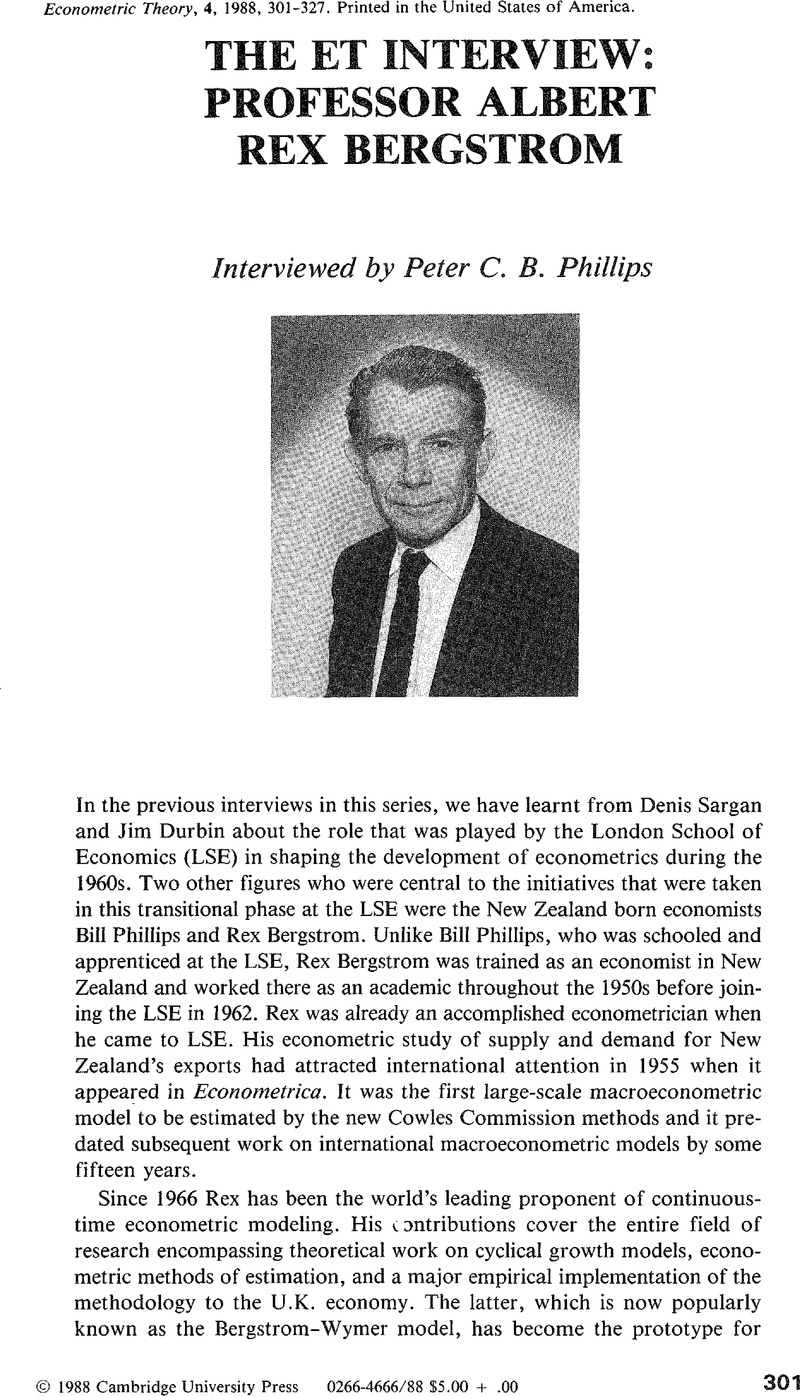Crossref Citations
This article has been cited by the following publications. This list is generated based on data provided by Crossref.
PHILLIPS, P.C.B.
1988.
Reflections on Econometric Methodology*.
Economic Record,
Vol. 64,
Issue. 4,
p.
344.
TIPPETT, MARK
and
YILMAZ, FATIH
2002.
RESIDUAL INCOME, REVERSIBILITY AND THE VALUATION OF EQUITY.
The British Accounting Review,
Vol. 34,
Issue. 2,
p.
141.
Chambers, Marcus J.
Phillips, Peter C.B.
and
Taylor, A.M. Robert
2009.
ECONOMETRIC THEORY MEMORIAL TO ALBERT REX BERGSTROM–INTRODUCTION.
Econometric Theory,
Vol. 25,
Issue. 4,
p.
891.
Nowman, K. Ben
2009.
REX BERGSTROM’S CONTRIBUTIONS TO CONTINUOUS TIME MACROECONOMETRIC MODELING.
Econometric Theory,
Vol. 25,
Issue. 4,
p.
1087.
McCrorie, J. Roderick
2009.
ESTIMATING CONTINUOUS-TIME MODELS ON THE BASIS OF DISCRETE DATA VIA AN EXACT DISCRETE ANALOG.
Econometric Theory,
Vol. 25,
Issue. 4,
p.
1120.
Phillips, Peter C. B.
2010.
Two New Zealand Pioneer Econometricians.
SSRN Electronic Journal,
Phillips, Peter C.B.
2010.
Two New Zealand pioneer econometricians.
New Zealand Economic Papers,
Vol. 44,
Issue. 1,
p.
1.
Yu, Jun
2014.
ECONOMETRIC ANALYSIS OF CONTINUOUS TIME MODELS: A SURVEY OF PETER PHILLIPS’S WORK AND SOME NEW RESULTS.
Econometric Theory,
Vol. 30,
Issue. 4,
p.
737.
Thomas, Jim
2019.
The Palgrave Companion to LSE Economics.
p.
3.



